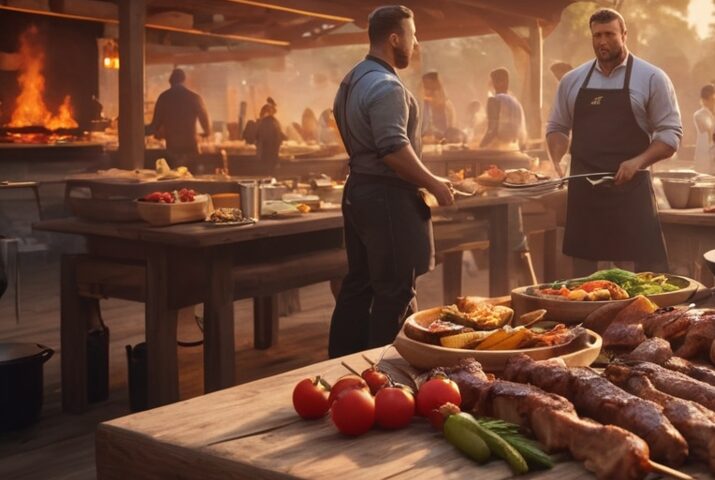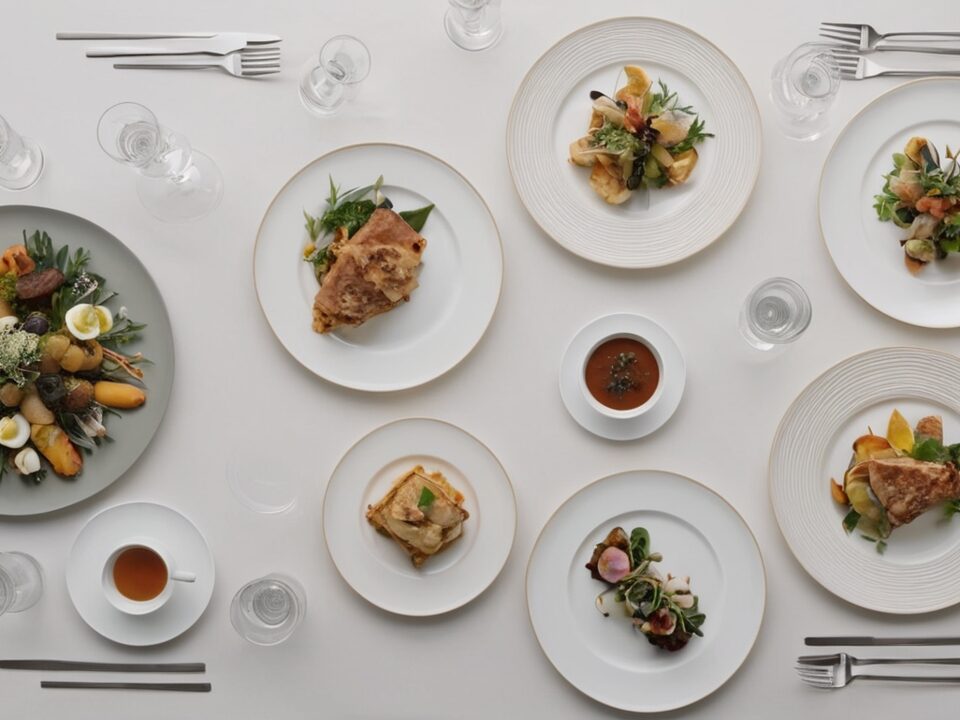
The Fire Queen Difference: Handcrafted Pizzas from a Real Wood Oven
December 6, 2025
From Italy to Toronto: Authentic Neapolitan Pizza Catering on the Go
December 16, 2025Introduction:
Planning a successful event requires knowing how to cater BBQ Mobile BBQ Catering effectively to satisfy your guests’ appetites and create a memorable experience. From selecting the ideal menu to managing equipment and timing, understanding the essentials of BBQ catering can transform any gathering into a feast full of flavor and fun. This guide will walk you through the key steps to cater BBQ like a pro.
How to Choose the Right BBQ Menu
Choosing the right menu is the foundation of learning how to cater BBQ Mobile BBQ Catering successfully. When selecting menu items, consider the preferences of your guests, the season, and your budget. Classic BBQ staples like ribs, pulled pork, and grilled chicken are crowd-pleasers that usually work well.
To cater BBQ effectively, it’s important to include sides and options that complement the main dishes. Popular sides like coleslaw, baked beans, and cornbread provide balance and variety. For guests with dietary restrictions, having vegetarian or gluten-free options can enhance the overall experience.
- When planning your menu, keep in mind these essentials:
- Protein variety (e.g., beef, chicken, pork)
- Complementary sides and sauces
- Special dietary accommodations
Taking time to thoughtfully create your menu will ensure that your BBQ catering is both enjoyable and inclusive.
Essential Equipment for BBQ Catering
Knowing how to cater BBQ Mobile BBQ Catering means being prepared with the right equipment. The cornerstone is a reliable grill or smoker that can handle the volume of food you need to prepare. Gas grills are convenient for fast cooking, while charcoal or wood smokers add rich smoky flavor.
In addition to the grill, essential tools like meat thermometers, tongs, and gloves help maintain food safety and quality during catering. Having portable tables, tents, and serving stations also supports smooth service, especially for outdoor events.
- Key equipment items to consider include:
- Grills and smokers suitable for your guest count
- Food prep and serving utensils
- Portable shelters and tables for setup
With proper equipment, you’ll be well-equipped to handle the demands of BBQ catering with confidence.
Tips for Cooking and Timing BBQ Food
Mastering how to cater BBQ requires precise timing and cooking techniques. Start by planning the cooking schedule based on the menu and number of guests. Slow-cooked meats like brisket and ribs need hours of smoking, while chicken and burgers cook faster.
Maintaining consistent temperatures is critical when you cater BBQ to avoid undercooking or drying out the meat. Use digital thermometers to monitor internal temperatures and don’t rush the process, as BBQ flavor develops best with patience.
- Essential cooking tips to remember:
- Prepare slow-cooked items early
- Monitor grill temperature constantly
- Rest meat after cooking for juiciness
Following these steps will help ensure every bite of your BBQ is perfectly cooked and delicious.
Serving Styles for BBQ Catering
How you serve food plays a major role when you learn how to cater BBQ for events. Buffet-style service is popular for BBQ catering because it allows guests to choose their portions and try different items. It’s efficient for large groups and reduces the need for extensive serving staff.
Alternatively, plated service adds a touch of elegance by serving individual meals, but it requires more servers and coordination. Some BBQ caterers offer family-style platters, encouraging sharing and a casual dining atmosphere.
- Common BBQ serving styles include:
- Buffet/self-serve
- Plated meals
- Family-style sharing platters
Selecting the right serving style depends on your event type, guest count, and budget.
How to Handle Dietary Restrictions
A crucial part of knowing how to cater BBQ is accommodating dietary restrictions to make all guests feel included. Offer vegetarian options like grilled vegetables, veggie burgers, or plant-based sausages for non-meat eaters.
Additionally, gluten-free sides such as salads or grilled corn can accommodate guests with gluten intolerance. Clearly labeling these dishes ensures guests can identify safe choices easily.
- To address dietary restrictions, consider:
- Including vegetarian and vegan protein alternatives
- Offering gluten-free sides and sauces
- Communicating menu details ahead of time
Proactively planning for dietary needs improves guest satisfaction and event success.
Planning Cleanup and Logistics
Successfully learning how to cater BBQ also means managing logistics and cleanup effectively. Organize waste disposal stations and plan for the quick removal of trash during and after the event to maintain a clean space.
Ensure your team is equipped with cleaning supplies and knows the setup and breakdown schedules. Planning for efficient transport of leftover food and equipment can save time and effort.
- Important cleanup and logistics tips:
- Set up accessible trash and recycling bins
- Coordinate staff roles for setup and breakdown
- Arrange transport for leftover food and equipment
A smooth cleanup process enhances the overall professionalism of your BBQ catering.
Conclusion:
Mastering how to cater BBQ is about balancing menu selection, equipment, timing, and guest needs. With thoughtful planning and attention to detail, you can create a flavorful BBQ experience that leaves guests impressed and satisfied. Follow these guidelines to confidently cater your next BBQ event with ease.



